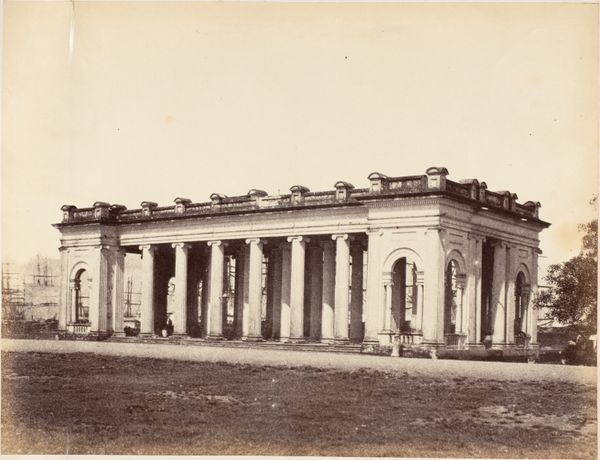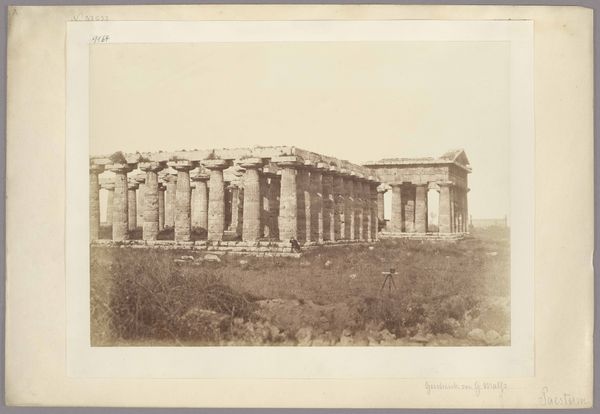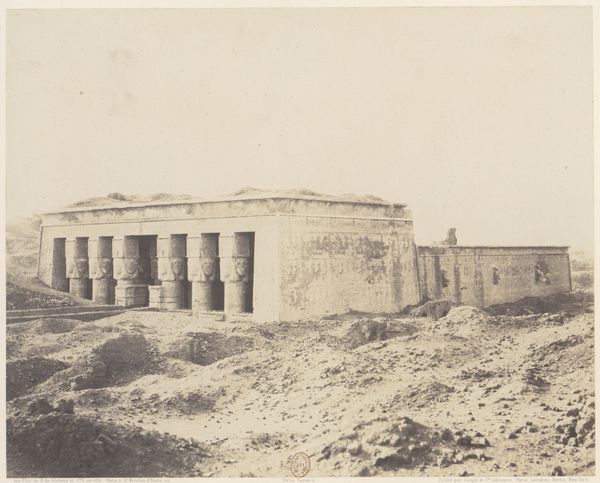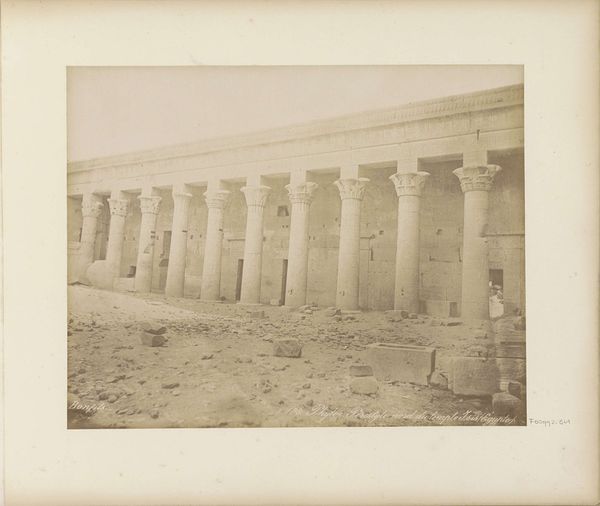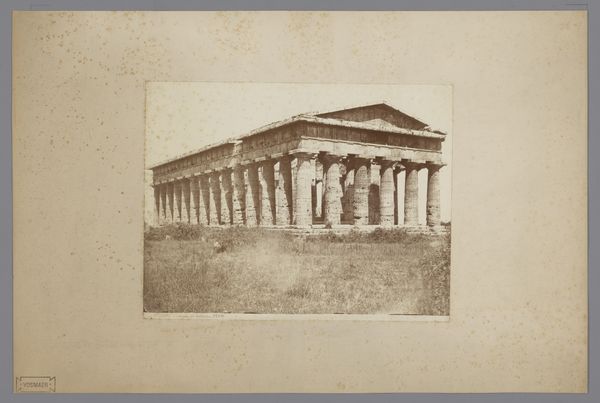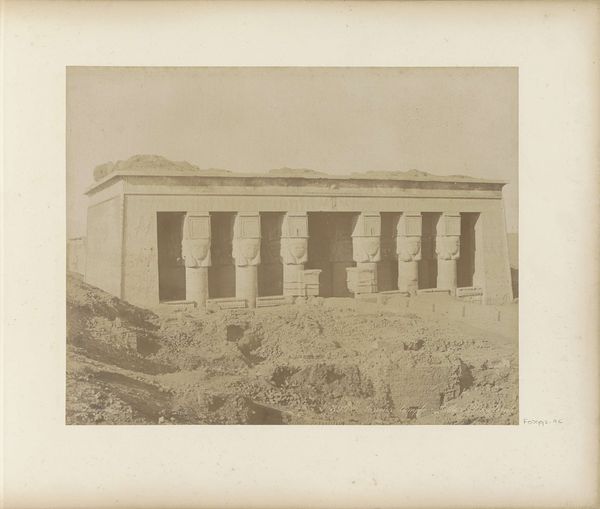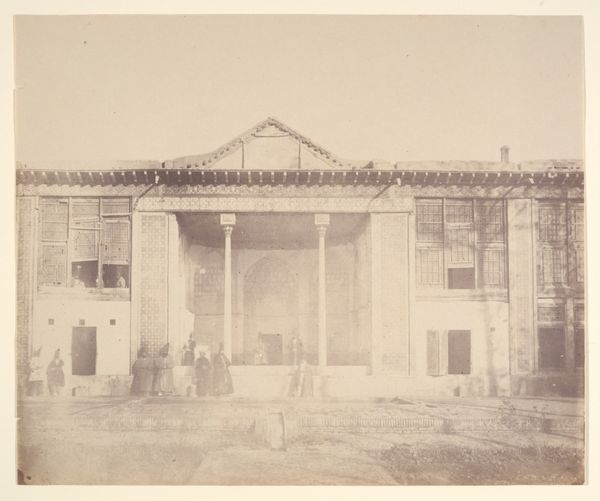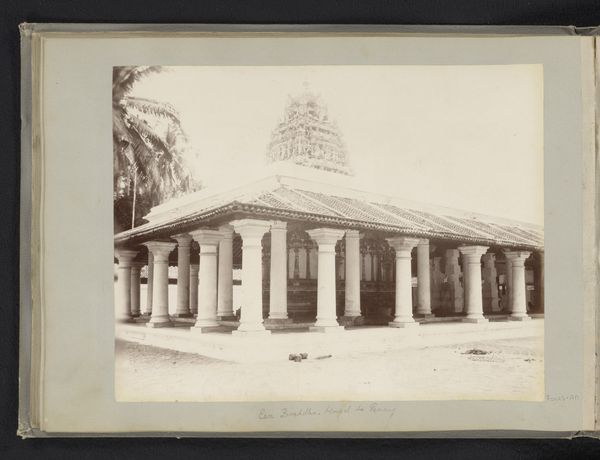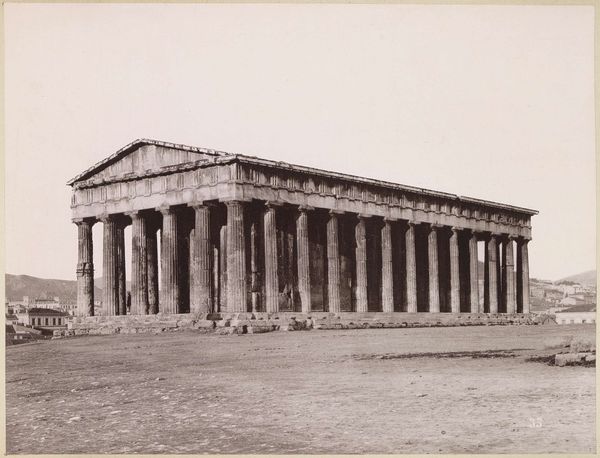![[Acropolis, Athens, Greece] by James Robertson](/_next/image?url=https%3A%2F%2Fd2w8kbdekdi1gv.cloudfront.net%2FeyJidWNrZXQiOiAiYXJ0ZXJhLWltYWdlcy1idWNrZXQiLCAia2V5IjogImFydHdvcmtzL2E1ZmI2NDU3LTQ3MjUtNDZlNC1iYWE0LWZmNWZkZGVkNzYzNS9hNWZiNjQ1Ny00NzI1LTQ2ZTQtYmFhNC1mZjVmZGRlZDc2MzVfZnVsbC5qcGciLCAiZWRpdHMiOiB7InJlc2l6ZSI6IHsid2lkdGgiOiAxOTIwLCAiaGVpZ2h0IjogMTkyMCwgImZpdCI6ICJpbnNpZGUifX19&w=3840&q=75)
#
photo of handprinted image
#
light pencil work
#
water colours
#
photo restoration
#
natural tone
#
charcoal drawing
#
carved into stone
#
watercolour illustration
#
natural palette
#
watercolor
Dimensions: Approx. 11 x 15
Copyright: Public Domain
Editor: Here we have James Robertson's "Acropolis, Athens, Greece," taken between 1850 and 1855. It's currently housed at the Metropolitan Museum of Art. The sepia tones lend the image a sense of antiquity and solemnity. What do you see when you look at this photograph? Curator: What strikes me immediately is not just the architectural marvel captured, but the *absence* within the image. The Acropolis stands as a symbol of classical democracy, a birthplace of philosophical thought and civic engagement. Yet, photographed in this way, what histories are being obscured, what narratives silenced? Consider the colonial gaze inherent in its documentation. Editor: That's a really interesting point. I hadn't considered it from that angle. So, are you saying this image participates in a kind of… erasure? Curator: Precisely. By focusing solely on the monumental architecture, it risks overlooking the social realities of 19th-century Athens. Who had access to this space then? How did local communities relate to these ruins being essentially "rediscovered" and documented by Westerners? This image is evidence but what kind of evidence do we consider? What stories are NOT told in the Westerner documentation. It reinforces certain power dynamics, framing Greece, specifically this historically charged location, as a relic of a glorious past, available for Western consumption and interpretation. What stories remain underexplored and undervalued even now? Editor: I see. So, beyond its aesthetic value, it prompts us to think critically about whose perspectives are privileged and whose are marginalized in historical narratives? Curator: Exactly. And how photography itself became a tool in constructing those narratives. It's a call to investigate the intersectional layers of history embedded within this seemingly simple image. Editor: I’m definitely seeing it differently now. Thanks for pointing that out. Curator: It's about acknowledging the complexities inherent in even the most seemingly straightforward representations of the past. Photography from this moment may reinforce Western superiority without intention.
Comments
No comments
Be the first to comment and join the conversation on the ultimate creative platform.
